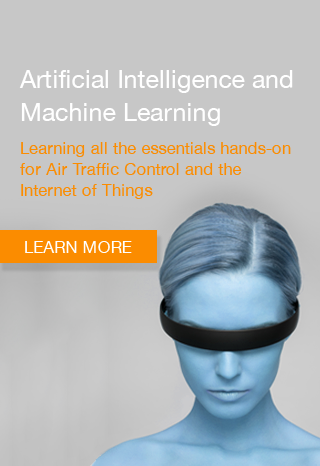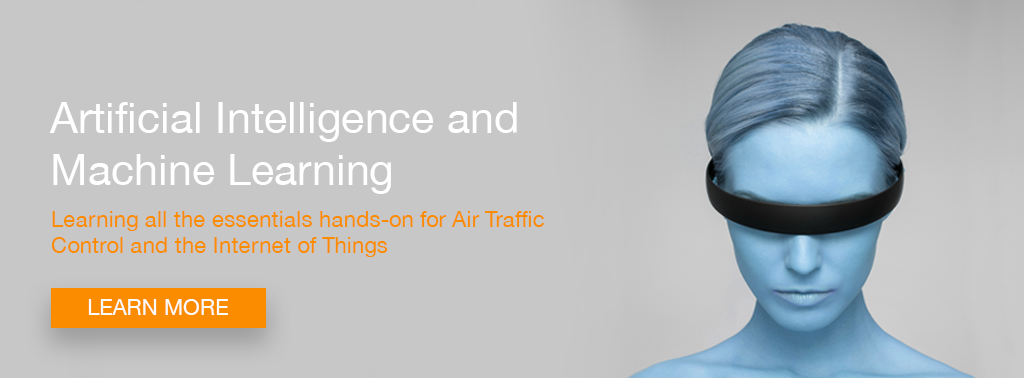Technology is always changing. A large percentage of it will make our lives easier by enhancing how we learn or go about our daily jobs in ways that were never thought before. Artificial intelligence and machine learning stand at the forefront of technology’s future, including their use in radar technology. The purpose of this article is to define what AI and machine learning are, how they relate to each other and what their role may be in radar technology.
What is Artificial Intelligence?
Simply put, artificial intelligence is technology that incorporates human intelligence to machines. This is accomplished by the machine following a set of problem-solving algorithms to complete tasks.
The roots of AI are rooted in different research disciplines, including computer science, futures and philosophy. AI research is separated into streams that relate to the AI application’s objective of “thinking vs. acting” or “human-like decision vs. ideal, rational decision.” This utilizes four research currents:
- Cognitive Modeling – thinking like a human
- Turing Test – acting like a human when interacting with humans
- Laws of Thought – a weak AI pretends to think while a strong AI is mind that has mental states
- Rational Agent – the intelligence is produced through the act of agents that are characterized by five traits that include:
- Operating autonomously
- Perception of their environment
- Persisting over an extended time period
- Adapting to change
- Creating and pursuing goals
Artificial intelligence agents can be categorized into four different types:
- Simple reflex agent that reacts to sensor data
- Model-based reflex agent that considers the agent’s internal state
- Goal-based agent that determines the best decision to achieve its goals based on binary logic
- Utility-based agent whose function is to maximize its utility
Any of the four agents can become a learning agent through the extension of its programming.
What is Machine Learning?
The term machine learning is used to describe techniques that can be used to solve a variety of real-world problems by using computer systems that are able to solve problems through learning instead of being programmed to solve problems.
Some machine learning systems are able to work without constant supervision. Others use supervised learning techniques that apply an algorithm on a set of known data points to gain insight on an unknown set of data to construct a model.
A third type, reinforcement learning continually learns from its observations that are obtained through interacting with its environment through iteration.
Creating a machine learning model typically employs three main phases:
- Model initiation where the user defines the problem, prepares and processes the chosen data set and chooses the applicable machine learning algorithm
- Performance estimation where various parameter combinations that describe the algorithm are validated and the best performing one is chosen
- Deployment of model to begin solving the task on the unseen data
Machine learning adapts and mimics the cognitive abilities of human beings, but in an isolated manner.
How Do the Two Relate to One Another?
Despite their differences, there is some confusion regarding what each technology does. This confusion is often exacerbated by the fact that both terms are often mistakenly used interchangeably. In reality, AI depends on machine learning to accomplish its goals.
So What is Link to Radar Technology?
 Let us first define radar technology:
Let us first define radar technology:
Radar technology at its best produces a 3D map of dots of different intensity and radial distances, which may be static or moving over time with a speed v(t). Different sensors (Pulse, CW, FMCW, Doppler, etc.) are better at different aspects. The complete picture may require the combination of several of these radars.
Synthetic aperture - With a moving source we additionally get the SAR effect, providing a better image and a 3D representation of each dot, similarly to 3D television, just with quantitative information (camera vision is only qualitative). With moving dots we additionally get the iSAR effect, providing similar input to SAR.
The rest is mainly post processing: filtering, Fast Fourier Transformation FTT, amplification, enhancement like moving target detection MTD or moving target indication MTI.
In fact we can do a bit more: based on reasoning we can also change the parameters of the radar (e.g. frequency or frequency pattern, the amplification, elevation, direction of the source etc), allowing for instance to better adapt the source parameters on the target, or to track it over time, while following it.
AI in Radar Technology
Let us now apply the "Rational Agent" which we introduced above to the radar context.
It will operate autonomously (1), perceive the environment (2), an adapt (the radar parameters) to change (3).
Artificial intelligence will provide reasoning with the help of
- comparative external data (e.g. a library of cross sections of air crafts, dynamic movement patterns of various animals, a library of biometric heart-beat patterns of fugitive terrorists).
- gained experience from the past and from model application (machine learning)
In the context of perimeter surveillance, the result from such reasoning could be:
3 humans are approaching the perimeter at GPS position x, with speed y in direction z. Human No 1 carries a device, potentially a machine gun type RPK74, the other two humans are unarmed. Human No 2 has the heartbeat pattern of the researched terrorist John Doe and is categorized dangerous.
But the rational agent has one more feature: the ability to create and pursue goals (4). In the context of the overall target of "perfect supervision of a perimeter" this might produce the goal: continuously suggest enhancements for the perimeter allowing for better surveillance.
AI in radar is just a subset of a systemic AI design across a complete architecture. It may be
- disjunctive, providing results to an API of an intrusion detection system IDS or a radar data processing system RDPS;
- orchestrated, where one central Master AI unit asigns tasks to peripheral AI units
- integrative, where interconnected AI peripheries align to one big Artificial Brain.
Where to Apply AI in Radar Technology
The possibilities of AI in radar are literally unlimited and may emerge into new applications and context, where we are not yet able to think of today (just like the Internet did).
But let us list some applications which are evident already now.
- Air Traffic Control - AI will help to better analyze, and in conjunction with intelligent RDPS better manage an dynamic air space, making it safer, more effective and more environmentally friendly (with shorter air times, optimized itineraries, schedules etc);
- Perimeter Surveillance - we already gave an example above. The supervision of governmental or military perimeters, but also corporate perimeters or a private building promises to improve significantly, including well reflected subsequent action.
- Medical appliances - radar can save lifes. We can monitor heart, breath, perhaps detect cancer one day. The SkyRadar team did a lot of research on this subject and owns some valuable patents. We will write much more about this in the subsequent blogs.
- Manufacturing - production monitoring, safety surveillance or quality checks are only a few of potentially high level goals which can be pursued.
- Homeland security - ground penetrating radars set an UAV can detect and in an integrated AI scenario dismantle landmines or moving radars can help defeat terrorists.
- Military - With all the scenarios described above, the potential of military applications of AI in radar technology are countless. Which leads us to the next point...
The Great Threat of AI
As Stuart Russel, Max Tegmark and many of their colleagues warned already in an open letter 2015: "Autonomous weapons select and engage targets without human intervention". A weapon in the cognitive stage of a rational agent will set and pursue goals to accomplish its overall objectives. That may lead to decisions over life and death.
Radars are the eyes of those weapons!
We - the researchers and developers do not want this. We urgently need regulations and international agreements on the limitation of AI in defense technology!
Conclusion
Once more technology is advancing fast. We will continue talking about technical impacts, implications but also social and legal implications.
We are positive about this technology as it promises to make our world a better place. Radar is one important part in it, as it will be part of the "eyes" of any reasoning agent. We invite you all to be part of it. Sign up to our blog, participate in the discussion, contact us if you have applications, ideas, contributions, concerns or any other valuable input. So we can shape the peaceful future together.
References
Many of our categorizations in the blog have been taken from a recent publication by Niklas Kühl, Marc Goutier, Robin Hirt, Gerhard Satzger at KSRI, Karlsruhe Institute of Technology. We would like to thank them for the wonderful contributions!
- Machine Learning in Artificial Intelligence: Towards a Common Understanding
(8 January 2019), by Niklas Kühl, Marc Goutier, Robin Hirt, Gerhard Satzger, first published at the Conference: Hawaii International Conference on System Sciences (HICSS-52) At: Grand Wailea, Maui, Hawaii - Read more articles on Artificial Intelligence in Radar Technology (2019 - today), by Dawn Turner, Martin Rupp and Ulrich Scholten
Image: Robot Love, by courtesy of Annie Pilon, (CC BY 2.0)




